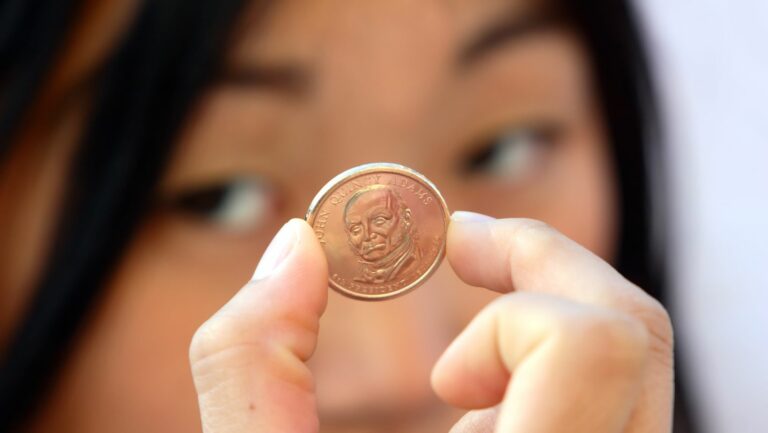
In 1863, during the tumultuous era of the Civil War, a unique form of currency emerged – the Civil War token. These tokens were privately minted and circulated as a means of trade when official government-issued coins were scarce. Our article delves into the fascinating history of these tokens, shedding light on their significance during a pivotal moment in American history.
Join us as we explore the intricate designs and messages engraved on these small yet powerful tokens. Discover how they served as a reflection of the ideologies and sentiments prevalent during the Civil War era. Through our analysis, we aim to provide a deeper understanding of the role these tokens played in shaping the economic landscape and social fabric of the time.
Origins of Civil War Tokens
During the Civil War in 1863, when official coins were scarce, local merchants and businesses took matters into their own hands by issuing Civil War tokens as an alternative form of currency. These tokens were typically made of copper, brass, or bronze and were used as a means of trade and exchange in the absence of government-issued money.
Civil War tokens were born out of necessity, filling the void left by the lack of circulating coins. They were durable, engraved with intricate designs, and often carried political messages that reflected the turbulent times of the era. These tokens played a crucial role in sustaining local economies and facilitating transactions when traditional currency was in short supply.
The origins of Civil War tokens can be traced back to the East Coast of the United States, where the initial shortage of coins prompted businesses to mint their own tokens for use within their communities. As the war progressed, the practice of issuing merchant tokens spread to other parts of the country, creating a decentralized system of currency that supplemented the official monetary system.
Significance during the Civil War
During the Civil War in 1863, Civil War tokens played a crucial role in local economies. [Civil War tokens] emerged as a practical solution to the shortage of official coins, allowing for essential trade and exchange to continue in communities across the nation.
[Civil War tokens] were not only a means of conducting transactions but also served as political and patriotic symbols. Engraved with intricate designs and messages, these tokens became a way for merchants and businesses to express their support for either the Union or the Confederacy.
The issuance of Civil War tokens reinforced local economies and helped communities navigate the financial challenges of wartime. These tokens filled a gap left by the absence of government-issued money, demonstrating the resilience and ingenuity of American businesses during a tumultuous period in history.
Civil War tokens also hold immense historical value today, providing a glimpse into the economic conditions and sentiments of the era. Their significance extends beyond their monetary worth, offering a tangible connection to the struggles and innovations of the past.
Designs and Engravings
When examining 1863 Civil War tokens, one cannot overlook the intricate designs and engravings that adorned these pieces. Merchants took great care in crafting these tokens, using them not only as a medium of exchange but also as a way to express their political affiliations and patriotic sentiments during a tumultuous time in American history.
Union supporters often depicted symbols such as the American flag, Eagle, or Lady Liberty on their tokens, showcasing their allegiance to the United States. On the other hand, Confederate sympathizers frequently featured images like Confederate flags, soldiers, or slogans supporting the Southern cause.
These designs and engravings were more than just decorations; they were powerful political statements that reflected the ideologies and loyalties of the individuals minting these tokens. In addition to conveying political messages, these images and mottos served as tools of persuasion to influence public opinion and garner support for the Union or Confederacy.
The artistic details on these tokens not only captured the essence of the time but also provided historians and collectors with valuable insights into the cultural climate and sentiments prevailing during the Civil War. Through these designs and engravings, one can delve deeper into the complexities of the era and appreciate the artistic craftsmanship that went into creating these historically significant artifacts.
| Key Points | |
|---|---|
| 1863 Civil War Tokens | Designs and Engravings |
| Symbols: American flag, Eagle, Lady Liberty, Confederate flags, soldiers | |
| Political Statements: Union or Confederate allegiances expressed through images and slogans | |
| Historical Insights: Reflect cultural climate and sentiments of the Civil War era |
Ideologies and Sentiments
When examining 1863 Civil War tokens, it becomes evident that these artifacts were not merely symbols of commerce but also powerful instruments of ideological expression. The engravings on these tokens were not random; they were carefully chosen to reflect the political affiliations and patriotic sentiments of their creators.
Union supporters showcased symbols like the American flag and Lady Liberty, embodying their allegiance to the United States and their desire for unity. Conversely, Confederate sympathizers prominently featured images of the Confederate flag and soldiers, signaling their support for the secessionist cause.
These design choices were not made lightly; they were strategic decisions intended to convey specific messages and influence public opinion. By circulating these tokens in daily transactions, merchants sought to subtly endorse their beliefs and shape the attitudes of the community around them.
The artistry embedded in these tokens not only captures the essence of the era but also serves as a testament to the deeply rooted ideological divisions that characterized the Civil War period. Through these intricate designs, we gain insight into the cultural climate of the time, understanding the complexities of sentiments and allegiances that permeated society.
In essence, 1863 Civil War tokens were more than just currency; they were vehicles of expression, carrying within them the heartfelt convictions and divergent viewpoints of a nation torn asunder by war.
Impact on Economic and Social Fabric
In addition to serving as forms of currency, 1863 Civil War tokens played a significant role in shaping the economic and social landscape of the time.
- Economically, these tokens addressed the severe shortage of small denomination coins caused by hoarding and the interruption of regular coinage production.
- By filling this void, they facilitated daily transactions and helped maintain a semblance of normalcy in trade during turbulent times.
Socially, these tokens became symbols of identity and allegiance.
- For Union sympathizers, possessing tokens featuring patriotic motifs fostered a sense of unity and pride in their cause.
- Conversely, Confederate supporters used tokens as a way to display loyalty to the secessionist movement and its ideals.
The use of these tokens was not just a practical solution to a pressing economic issue but also a means of expressing deeply held beliefs and values.
Key Takeaways
- Civil War tokens were privately minted during the scarcity of official government-issued coins in 1863 to facilitate trade and fill the economic gap.
- These tokens served as political and patriotic symbols reflecting the ideologies of Union and Confederate sympathizers during the Civil War.
- The intricate designs and engravings on Civil War tokens, such as American flags and Confederate symbols, were deliberate political statements aimed at influencing public opinion.
- The tokens provided historical insights into the cultural climate of the era and were more than just currency but instruments of ideological expression.
- 1863 Civil War tokens had a significant impact on the economic landscape by addressing the scarcity of coins and socially by serving as symbols of identity and allegiance for different factions.
Conclusion
In essence, 1863 Civil War tokens were more than just coins; they embodied the resilience and resolve of a nation torn apart by conflict. These tokens not only facilitated transactions during a time of coin shortages but also served as powerful symbols of loyalty and patriotism. By using these tokens, individuals expressed their unwavering support for their cause, whether Union or Confederate. The impact of these tokens extended beyond mere economic utility, influencing social identities and shaping the collective consciousness of a divided America. As we reflect on the significance of these small yet meaningful artifacts, we gain a deeper understanding of how history intertwines with everyday life, leaving an indelible mark on the fabric of society.
Frequently Asked Questions
What was the significance of 1863 Civil War tokens?
1863 Civil War tokens served as substitutes for small coins during coin shortages in the Civil War era. They were not only practical for daily transactions but also served as markers of identity and allegiance.
How did these tokens influence the economy?
These tokens addressed the scarcity of small coins during the Civil War, enabling smoother transactions. They played a crucial role in maintaining economic activities in the absence of official coinage.
What role did Civil War tokens play in social contexts?
Civil War tokens served as symbols of identity and allegiance. Union supporters used patriotic designs, while Confederate sympathizers displayed loyalty to the secessionist cause, reflecting social and political ideologies.
Why were these tokens more than just a monetary solution?
Beyond their economic utility, Civil War tokens represented deep-rooted beliefs and values. They allowed individuals to express their allegiances and sentiments during a tumultuous period of American history.

![Castle Rushen Clock 20p [Value, Rarity and Design]](https://becoincollector.com/wp-content/uploads/2022/12/Castle-Rushen-Clock-20p-768x433.jpg)




